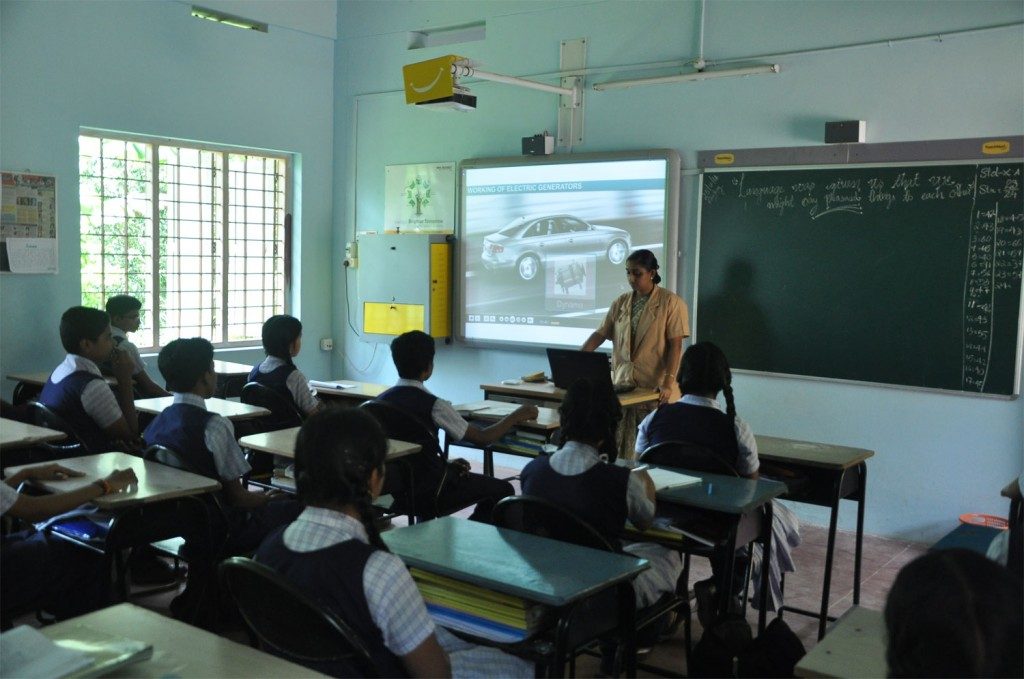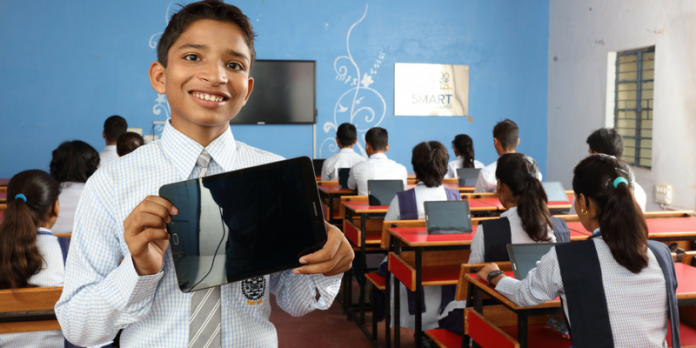Schools and colleges are swapping old school textbooks for new-age ipads. Trishann Henriques explores the phenomenon of digital education
Education is not like it used to be. Not only are syllabi the centre of constant change, but so are teaching styles and methods. From rudimentary to modern, classrooms are growing in the way knowledge is imparted. Wikipedia has come to replace library research, pens and pencils have been replaced with styluses and notebooks and textbooks are being done away with to make way for iPads and ebooks.
Education Then and Now
Technological advancement has hardly ever posed as a bane. It makes the life of its users easy and hassle-free while also saving time. In most areas of business, manual documentation has been scrapped for virtual systems that have made business processes easy and swift.
A teacher writing notes on a blackboard while students agonisingly strive to pen each word before he or she erased it all only to fill it with more is far from rampant today. It’s been swapped with virtual systems that include slideshows, presentations and notes that students can access via the intranet. Maths, Science and other subjects are taught using apps, thus making learning entertaining. With the promise of imparting knowledge in a manner that is interactive, easily understandable and interesting, education in schools and colleges across the globe is being digitized. Gone are the days when the beginning of a school year was associated with new notebooks and textbooks. Ebooks and iPads are taking permanent residence in kids’ school backpacks.
The Benefits Digital Education Offers
Students love gadgets.
Give a kid an iPad or a tablet and you won’t need to worry about boredom. These technological marvels are favorites among young kids. They love the different ways they can exploit it. Hence learning on these devices is hardly much of a problem.
Applications galore.
History, English, Maths, Science, Geography and many more, there is an application for most subjects. Most app interfaces are colorful and very entertaining; they encourage kids to learn the fun way.
Bye-bye heavy schools bags.
With these gadgets in use, there is hardly a need to carry stacks of textbooks and notebooks. This considerably reduces bag weight that is known to cause shoulder and back problems over a period of time.
Information, information, information.
The best part about working on computers and the internet is the seemingly infinite amount of information a person has access to. All this with just the click of a button. On the internet, one click leads to another, which means more information and ultimately more knowledge.

The Shortcomings In Digital Education
Costly! iPads/tablets don’t come cheap.
With prices ranging from Rs. 3,000 to Rs.40,000, not everyone can afford one.
Not durable.
A typical tablet’s battery lives 2-3 years. It then begins misbehaving and slowing down. This takes away from the ease of technology making it more of an inconvenience.
Discourages extensive research.
The information available on the internet is superficial. Internet research does render desired results but in a very limited manner. On the other hand, research by reading books in libraries encourages extensive research that has to be done by in-depth reading.
Technological dependence.
Probably one of biggest repercussions of introducing high technology in schools is encouraging a child’s dependence on technology. Access to the internet at an early age also means exposure to social networking sites and even pornography which often means more harm than good.
How Does Digital Education Help The Environment?
Limited use of paper means less felling of trees. If educational institutes across the world reduced the usage of textbooks, that would be good news for the environment. Fewer trees would be cut, ecosystems won’t be destroyed and there would be a lesser amount of carbon dioxide in the environment.
But this doesn’t only mean good. Individual devices lead to more energy consumption by way of charging. This, in turn, causes continued emission of greenhouse gases into the environment.
The Indian Angle
In an effort to link 25,000 schools and 400 colleges to an education programme and network, the Government of India has initiated the use of Aakash tablets across several educational institutes in India. The tablet was launched with an introductory price of Rs. 2,250. While the Government of India wishes to make Aakash, the world’s cheapest tablet, available to all schools and colleges across the country, the endeavor comes with its fair share of challenges. Price, age group and in what capacity they would replace traditional teaching are some areas that still need attention.
Schools In India That Have Incorporated Digital Education
- Podar International School, Mumbai
- Springdales School, New Delhi
- Pathways World, Gurgaon
- American School Of Bombay, Mumbai
- The Universal School, Mumbai
Youth Inc’s View
The introduction of tablets and iPads in the Indian market is undoubtedly a move towards better teaching methods. But in a country like India, where large chunks of the population are poor, purchasing these high-tech gadgets is farfetched a thought. Teaching-wise, the government needs to map areas of education that it wishes to modify by using tablets or iPads. As it stands right now, there is no mention of how the change is going to come about; most of what has been said is vague.





























